Russian translation services market via experts’ eyes

It is known that the construction of the famous Tower of Babel, designed to rise from Earth to Heaven, was, according to the Bible, swiftly interrupted by God via plunging the ambitious builders into ‘an absolute linguistic chaos’ however, according to modern linguists, the tower would have been successfully completed, if there were at least one professional interpreter among the builders, who suddenly found themselves speaking in different tongues at the peak of construction, capable of translating at least one of the new languages into another, and consequently, help the ‘now-hetero-lingual folks’ understand one another to complete their mission. There is another example, which is relatively more recent, but with a geopolitical tinge. In 2000, speaking at a press conference with then-British Prime Minister Tony Blair, then-Russian President Vladimir Putin cited a ‘colorful expression’ from the doctrine of anti-Russian terrorists: “Above us is Allah and below us are goats.”
To Putin’s surprise, this motto did not produce the desired effect on the British delegation because of the interpreter’s purely literal translation of ‘kozeol,’ the Russian word for ‘goat’, directly into English equivalent, without taking into account all the subtleties of the figurative meanings of the word, as it was used in this concrete context. As a result, the insult contained in the doctrine, according British media’s correspondents, versed in the subtleties of the English language, ‘was significantly diluted’ in its translation, and hence lost the sting in the original context. This is because the word ‘goat’ in English, in contrast to its Russian equivalent, does not have the same level of offensive connotation.
Generally, in both business and social lives, poor-quality translations, apart from causing corporate reputation and profit losses for businesses and PR-image damage for celebrities, often create embarrassing moments or unforgettable cases of humiliation, such as those felt last year by the leadership of the Russian Academy of Sciences on seeing the translated English version of its Russian language website. Some of the most ludicrous cases in the translations will help underscore the gravity of disgrace experienced by top Russian scientists with global fame. Thus, in the English version of the site, ‘Institut Belki’ (or NII Belki) was simply literally translated as ‘Squirrel Institute’, from the local word ‘belka’ for ‘squirrel,’ instead of ‘Institute of Proteins Research,’ while Russian Academy of Sciences President Yury Osipov became President of Wounds, from ‘president of ‘RAN,’ the Russian acronym for the academy’s full name.
 Evgeny Kuznetsov, CEO of Translation Center KGTC Company: “We don’t intend to rest on our laurels, but shall continue to further expand our client base, applying our approach of providing “the best service for people” to every customer and project.”
Evgeny Kuznetsov, CEO of Translation Center KGTC Company: “We don’t intend to rest on our laurels, but shall continue to further expand our client base, applying our approach of providing “the best service for people” to every customer and project.”
These three different examples from different eras clearly illustrate the importance of translation quality and professionalism of interpreters in establishing productive communications among people of different languages. Specifically, the example of poor translation of Putin's speech shows how wrong translation of official speeches could easily result to negative consequences on the geopolitical arena. Similarly, one can draw, at least, two key lessons from the Tower’s parable. Firstly, it highlights the antiquity of the absolute necessity for professional translators for humanity. Secondly, it underscores the absolute importance of quality translation for successful implementation of any project, just as its absence is completely destructive for any venture in today's globalized world, as illustrated by the story of biblical tower.
Such concepts as profession’s evolutionary adaptability to prevailing realities, professionalism, etc., and how these and other factors affect the Russian translation market today, are only parts of the main topics to be covered in this industry report. Here, to begin, it is necessary to note that today’s Russian market, as a reflection of all the processes that had taken place in the country over the past 20 years, has changed beyond recognition. This is due to changes in the social, economic and political situations in the country, globalization of economic and political relations between countries, the growing fashion for computerization of business processes, using the most advanced information technologies, most of which require translations from their original languages into Russian and vice-versa.
The signs of the metamorphosis that has taken place on the Russian market are vividly evident on the desktops of all modern translators. Unlike the typical ‘workplace’ of a Soviet translator 20 years ago, which contained only a typewriter and numerous dictionaries in different languages, a modern translator has a powerful computer with an unlimited Internet access to various online resources, and stuffed with a variety of specialized software programs. In addition, the latter, unlike his/her Soviet counterparts, has all sorts of online contacts, such as mobile phones, e-mail, Skype, various types of social networks to communicate with office managers, coordinating translation orders on one hand, and to provide quick accesses to clients, on the other. Clearly, today’s Russian translation market has little or nothing in common with the market that existed 20 or even 10 years ago.
 Karina Bundina, business development director at Prima Vista Translation Agency: “Initially, our enthusiasm was our company’s main driver, which was later complemented by experience, market knowledge and the ability to prioritize business processes.”
Karina Bundina, business development director at Prima Vista Translation Agency: “Initially, our enthusiasm was our company’s main driver, which was later complemented by experience, market knowledge and the ability to prioritize business processes.”
However, despite growing obsession with modern IT gadgets in the industry, almost all the translation agencies’ CEOs contacted for comments during the preparation of this review, spoke negatively about the use of so-called automated electronic translation programs. Thus, according to Karina Bundina, the director of business development at Prima Vista, professional translators never use such programs because of the low ‘their low general level of development’ that it is much easier to perform translation from scratch than to edit the ‘gibberish’ from them.” Yuri Melnikov, the CEO of MARK Business Translations, is in full solidarity with this point of view. He noted that those who claim that the profession of interpreter is in danger of extinction because of the market’s passion for IT gadgets are far from reality. “There are no electronic devices today and probably will not be in the nearest future, which can adequately replace human intellect, as far as professional translation is concerned.”
However, Dmitry Beloshapkina, the CEO of Exprimo, has another point of view. Like other experts, he is also enthusiastic over such software programs, but unlike his colleagues, he does see their advantages under certain conditions. “In general, I believe that only well-tuned and professionally managed machine translation software combined with an extensive tasks pre-execution preparation and serious copy-editing can provide a translation, whose quality level is above average,” he said. “In this regard, I believe that in 10-15 years, professional automatic translation gadgets in conjunction with the use of a collaborative approach will immensely reduce the need for human-aided translations.”
A similar view is shared by Fonetix Translations CEO Stepan Grabovsky, who noted that, despite the current economic downturn, researches in technologies are not standing still, thus laying a good foundation for the LSP business development. “Today, most major players on our market use computer-aided technologies, which help to drastically cut customer expenses on translation and maintain quality standards,” he added. “The future belongs to businesses that keep abreast of time and rely on state-of-the-art products in combination with expertise and competence of professional translators.” Fonetix Translations Editor-in-Chief Michael Tutikov offered a view similar to that of his colleague, stressing that the IT-passion trends, which started at the turn of the millennium with the development of ICT, will only grow stronger in the future. “These trends include the use of integrated text processing and ERP software; mobile and distant employees and finally cloud data resources.”
“Today, translation activity has become a self-sustaining business unit with its own set of unique industry rules, standards and tools for communicating with clients via modern marketing strategies.”
Alexei Baitin, head director of Yandex Translation Service, one of the providers of online translation services in Russia and across the globe, agrees with all the points of view of both opponents and advocates of automated online texts translation software. “Statistical machine translation cannot, naturally, be compared with literary translation done by a professional. But machine translations usually become handy, when someone simply needs to understand the basic meaning of a text, for example, when reading an article about a favorite artist or a description of a new gadget. An online translator can easily help to do this within a few seconds.”
Baitin has attributed the growing popularity of online translators to increasing ‘socialization’ of Internet users, a fact collaborated by data compiled by Yandex Translation Service, which about a third of translations are associated with correspondence, blog conversations, chat rooms and email messengers. “Besides, as the number of Internet users grows, so also does the quality of online translations. These two processes are interrelated, as increasing user interest stimulates companies to invest more in new technologies, which leads to the emergence of higher quality products on the market,” he added. “Consequently, this leads to an increase in user’s data base of these products that enables companies to improve them further.”
Russian translation market’s key development stages
According to industry experts, translation activity today has become a self-sustaining business unit with its own set of industry rules, standards and communication tools with customers via modern marketing strategies and other promotion technologies to bring their services to end consumers. With regard to Russia, industry experts have identified three main phases in the market’s development. The first phase, tentatively labeled,‘the early 1990s,’ was during the decline period of the Soviet Union when people gained the right to ‘commercialize’ their economic activities, a policy that was an offshoot of “Perestroika.”
 Yuri Melnikov, CEO of MARK Business Translations: “Our key competitive advantages include our fine-tuned work process, unceasing quality control and a well-established reputation as a highly professional company in our industry.”
Yuri Melnikov, CEO of MARK Business Translations: “Our key competitive advantages include our fine-tuned work process, unceasing quality control and a well-established reputation as a highly professional company in our industry.”
Indeed, it was during that period that the first translation agencies, which will later become the pacesetters on the Russian market, were incorporated. This was followed by a period of market development, which was characterized by ‘screening’ of players in accordance with the ‘Darwinian principle’ of ‘survival of the fittest,’ as only the most efficient, capable and well-organized agencies survived during the rugged late 1990s and early 2000s. And, then came the period of full market maturity, with all the attributes of modern functioning industry. Thus, describing today’s Russian market, TechInput President Boris Aronstein highlighted the following main features: presence of few established players amid numerous small agencies; absence of major international translation agencies; predisposition of translation providers to accepting whatever comes their way, regardless of their specialization, and finally, complete lack of financial transparency, etc.
A similar view is shared by Nowitex Translation CEO Evgenia Tsygantsova, who noted that today’s Russian market is characterized by chaotic movements of translation companies and agencies, freelance interpreters, amateurs fond of foreign languages with good writing skills, etc. “Indeed, there are no key players, monopolists or outsiders on this market. That is why clients need to know that translation services are a product requiring an individual approach, high quality, diligence on the verge of self-sacrifice and style.” In a related development, EGO Translating Vice President for Innovative Projects Olga Schemeleva highlighted the latest modern international trends in globalization as a key market driving factor. “The requirements for linguistic support for most clients have started to expand. It is no longer enough just to translate documents, materials and texts, as clients’ requirements have become much broader.”
Other key features of today's market, according to some other experts, include the existence of professional national and regional associations of translators, high-level of competition and stratification of the industry into large-, medium- and small-scaled players, depending on companies’ possession or lack of sufficient human, financial, technological and other necessary resources that enable them to influence key market’s processes and trends.
“The signs of the metamorphosis that has taken place on this market are vividly evident on the desktop of a modern translator, who has a powerful computer loaded with specialized software and unlimited Internet access to a variety of online resources.”
One of such processes, according to Yuri Alekseyev, the president of Russia’s National League of Translators, is that today’s professional translation services market is dominated by translation bureaus, the absolute majority of which consistently pursue a price dumping policy by hiring translators based on a minimum services cost principle. “Today, there are practically no translation companies on the market that have declared their areas of expertise or industry profile specification. Most translators are ready to translate everything in an incredibly short time and at price dumping rates,” he added. “But there is, however, a relatively small number of highly qualified translators on the market, who work directly with customers. Naturally, their prices are much higher than the prices indicated by translation bureaus in their price lists.” Alekseyev also noted another ‘sore spot’ in the industry. “Today, a major problem in the industry today is that most customers know little or nothing about the real specifics of translation. This helps explain why most often clients only remember at the last moment that they need to translate texts or events into foreign languages remember, a practice that makes high-quality translation almost impossible.”
These and other problems notwithstanding, experts claim that the Russian market’s pre-crisis average growth rate was 20% per year, a figure that underscores a high level of players’ activeness and activities in the industry. Today, even more dynamic growing market is envisaged in the next few years. With the long-awaited ascension of Russia to the WTO expected to take place soon, trade ties between Russia and the rest of the world will increase, and this will lead to a sharp increase in the inflow of investment, import of foreign equipment and advanced technologies, whose exploitation manuals will have to be translated from foreign languages into Russian.
Airing a similar view, KGTC CEO Yevgeny Kuznetsov noted that the Russian economy as a whole and the translation market in particular are hurt by the country’s current lack of WTO membership. “We need to be more open. Indeed, the current world order, integration among countries, globalization trends and related processes, are forcing both ordinary folks and companies to actively develop international cooperation. These trends will inevitably stimulate learning foreign languages or make people turn to professional interpreters/translators for help. Therefore, Russia’s admission to the WTO will give a great impetus to all these processes in our country.”
A similar view is held by Melnikov, who noted that Russia’s WTO membership will only help the market to rapidly develop further, and this will not only enable companies and the economy to ‘catch up’ with their pre-crisis performances, but ‘supersede’ them. “This is why great hopes are being placed on Russia’s eventual admission into the WTO.” Indeed, after ascension to the WTO, when Russia, now as a member of the organization, moves onto WTO member states’ market, it will, according to experts, be accompanied by mandatory translations of companies’ official data, names of their goods and services, as well as instructions for their professional use in various languages.
“Generally, poor-quality translations, apart from damaging businesses and corporate reputation, often put clients in highly embarrassing positions or unforgettable cases of humiliation.”
After all, high-quality translations of documentations are absolutely necessary conditions for services and goods manufactured in one country to be well received on overseas markets, which are already brimming with competitors in the form of local players and providers of similar services and products from other countries. Besides, according to Tutikov, all these processes will receive a huge boost from the modernization policy currently being pursued by Russian leaders today, as the policy envisages active implementation of advanced technologies, including imported ones, in different sectors of the economy and government agencies. Such technologies will be useless to end users in the country without their high-quality technical translations into the ‘local lingua franca.’ These trends envisage possibly large translation orders and, consequently, a brighter future ahead for translators.
Today’s market: size and prevailing trends
According to Techart, a market research group, there are about 850 translation companies in Russia, 40% of which are located in Moscow, about 14% in St. Petersburg and the rest scattered across the country. Such distribution is due, among other factors, to the lopsided concentration of business and political activities in the nation’s ‘two capital cities.’ Specifically, when broken down, Moscow currently accounts for 50-60% of all the investment and international trade activities in the country, St. Petersburg accounts for about 20-25%, while other cities in the regions are home to about 15-30%. Consequently, many translation companies in other cities often take subcontracts from Moscow and St. Petersburg translation firms.
Speaking about the state of development and size of the Russian market, Bartov calls against limiting the scope of the industry only to the natural geographic boundaries of the country as the services of Russian translators are often needed by foreigners venturing not only into the country, but also other markets in the CIS. “This is because if local translators in other CIS countries can somehow manage to cope with translations from their native tongues into Russian and vice versa, the search for technical translators capable of professionally translating from English, German or French, etc., into Kazakh or Azeri languages will lead to a dead end."
 Boris Aronstein, the president of TechInput Translation Company: “Having focused on the petroleum industry, our company has established strategic cooperation with the world’s leading petroleum consulting companies in this industry.”
Boris Aronstein, the president of TechInput Translation Company: “Having focused on the petroleum industry, our company has established strategic cooperation with the world’s leading petroleum consulting companies in this industry.”
By category of services, the biggest market share, according to the experts polled for this report, belongs to technical translations, which include the translations of highly specialized documents, ranging from financial reports to instructions and manuals for operating complex machinery. Next is localization of websites and software programs, followed by translation, including sequential and simultaneous interpretations. The last, but not the least, is the segment of multimedia, audio, video and other interactive materials translations.
Such diversity of services producers, on one hand, means high competition among market players, while, on the other hand, gives potential clients a variety of different translators to choose from, based on their ‘price-quality ratios,’ thus forcing companies to reroute serious investments in to staff, infrastructure, technology and management development so as to stay above competitors.
It needs be noted here that the most common translation language pair is Russian-English, which, according to industry experts, accounts 50-75% of the total translation services on this market. Also very popular are languages spoken in former Soviet republics, partly because of intensive influx of labor migrants from those countries to Russia (see Russia’s most commonly used translation language pairs). These language services constitute the global market, whose overall size in 2010, according to Common Sense Advisory, amounted to about $26.3bln, which means a y-o-y growth rate of 13.15%. “These rather optimistic estimates are more relevant to Russian translators than to their European or U.S. counterparts,” EnRus CEO Natalia Shakhova noted. “A rapid growth in international trade and tourism has increased the demand for translations to and from Russian. Consequently, the Russian translation market is growing even faster than the entire economy.”
The main drivers of the market’s dynamic growth are development of global trade (disregarding the impacts of latest crisis), the movement of domestic firms onto new markets, which requires the translations of all kinds of documentation (incorporation papers, marketing, technical, and so on) into different languages. Then come the high-tech market, market consolidation through M&A transactions and globalization of businesses, where, thanks to the Internet, orders taken in one country are sent for execution in a completely different part of the globe.
 Olga Schemeleva, EGO Translating Vice President for Innovative Projects: “We are currently the only translation company offering this exclusive service on the Russian market – searching for information in foreign sources – for clients.”
Olga Schemeleva, EGO Translating Vice President for Innovative Projects: “We are currently the only translation company offering this exclusive service on the Russian market – searching for information in foreign sources – for clients.”
According to Beloshapkin, the Russian market is estimated at $400mln-$500mln, a figure, which, in view of the global market size quoted above, amounts to just 2% of the latter. These data are in consonant with Techart’s figures, which estimated the size of the market in 2010 at $510mln (see The growth dynamics of the Russian market in 2006-10). “For the first time since the crisis, market growth in 2010 reached the pre-crisis level of 15%. We expect the market in the next three years to grow by 13-17% per year,” Techart researchers said. This is due to several world's major sporting events that will take place in Russia such as the Olympics in Sochi in 2014, the World Cup in 2018, as well as the ongoing modernization of local factories, procurement of foreign equipment and technologies, opening of joint ventures between Russian and their foreign partners.
With regards to prevailing trends, it needs be noted here that both players of national markets and global industry today are looking for new ways to adapt their services to the growing needs of customers. For example, last year, an international translators conference, which took place in the Polish city of Krakow under the title, ‘Days of Inspiration’, was devoted to the latest industry trends such as growing use of software products. Specifically, the speakers covered all the relevant themes — the automation of translation processes, interactions between translators and clients through the use of advanced software programs and demonstration of the possibilities of computer-aided translation (CMS, CAT, TMS) and others.
Russian market vis-a-vis similar markets in other countries
According to Shakhova, one of the most distinguishing features of the Russian market is the large number of translators from ‘nonlinguistic’ educational backgrounds. “This trend stems from two reasons: first, the demand for translators in Russia has risen so sharply as a result of the fall of the Iron Curtain that are simply not enough linguists to satisfy it,” she said. “Second, wages in Russia are comparatively low, thus forcing lots of teachers, doctors, etc, into part- or full-time employments in the translation industry.” According to experts, such change in professions characterizes mainly the Russian and other underdeveloped markets. “It is rare, for example, for a U.S. doctor or a lawyer to work as translators, because their basic education usually provides them with much higher earnings, while in Russia everyone, who knows a foreign language, tries to make extra incomes from translations.”
Bartov says that the translation market should be divided not according to geography, but according to the degrees of development of national economies into two major groups: developing or developed. “For example, many translation companies in Russia, India and Egypt are ‘fly-by-night’ outfits, whose behaviors on the market are unpredictable,” he said. “But, in general, they are more or less familiar with translators’ modern technical tools, such as SDL Trados, as opposed to translation companies in, for example, Turkmenistan, where the level of technical capability is still in its infancy,” he added. “But if we look at Western Europe or the United States, their demands, from a technical point of view, often seem complex as they require the use of programs, which several Russian companies do not have the least idea about, such as Deja Vu, Across, Star Transit, Catalyst, Passolo and so on.”
Besides, these markets, according to experts, also differ in terms of levels of employees’ professionalism and responsibility. “If in developed countries, adherence to the stated project deadlines and high quality is ‘sacred,’ the same cannot be said of developing countries, where deadlines are merely ‘some timeframes’ that can easily be broken at will, while quality is seen just as a useful, but not necessarily mandatory criterion,” Bartov added. He also proposes dividing the translation markets into two segments - inexpensive low-quality translations and expensive high-quality translations markets. “Low quality translations are gradually being replaced by automatic translation software programs, thus forcing the translation companies in this niche out of operation or upgrade the quality of their services.”
 Evgenia Tsygantsova, general manager of Nowitex Translation: “The fundamental principles of our company are high quality, professionalism, efficiency, reliability and confidentiality.”
Evgenia Tsygantsova, general manager of Nowitex Translation: “The fundamental principles of our company are high quality, professionalism, efficiency, reliability and confidentiality.”
Asked to rate the Russian market among other national markets in terms of maturity, most experts place Russia between emerging markets in the CIS, Asia, Africa and Latin America and the more developed markets in Western Europe and North America. Thus, according to Melnikov, one, for objectivity in comparison, needs to divide the European markets into the EU and CIS markets. “In my opinion, Russia is located somewhere between the former and the latter, in terms of maturity and other comparison metrics.” A similar view is held by Grabovsky, who noted that the Russian market, in terms of turnover size, is in an intermediate position. “In terms of volume, the Russian market, in my opinion, is between the CIS and European markets. It is bigger than similar markets in the CIS, but much smaller than those in Europe. However, as for the quality of service, professional qualifications of employees and availability of equipment, Russia, and primarily Moscow, is much ahead of those in CIS, but on a par with most of other EU states.”
The issue of translations quality guaranty
This theme – guaranty of quality – was one of the key issues at last year's Translations Russia Forum 2010 in Yekaterinburg that focused on certification standards and their present and future impacts on the market. “As Ksenia Vinogradova from Avanta and Miriam Lee from FIT noted in their speeches on the theme, “The Future of Industry Standards: Do we Really Need Them,” there is no mandatory certification in the industry, since text translation is not included in the official registry of public services subject to mandatory certification in Russia. “Therefore, one can only talk about certification with respect to translations, according to these experts and other forum members, within the State Standard GOST 9001-2008, which establishes certain general requirements for quality management system in general, and not necessarily for translation services. Consequently, such certification cannot fully guarantee the quality of translation services.”
Speaking on this issue, Shakhova stressed the lack of clear criteria for assessing the quality of completed tasks, thus making customers to evaluate the quality of translated documents by such parameters as honoring deadlines, speed of taking orders, swiftness of feedbacks from companies, etc. “It is obvious that clarity and politeness are no substitutes for adequacy and quality of translation, but at the same time, good work organization often leads to high quality job, while sticking to deadlines is also very important for clients.”
Bartov highlighted what he called an unpleasant tendency in the industry, where quality is sacrificed for volume. “According to our estimates, no more than 5% of Russian translation companies have in-house quality control systems, the rest simply pass onto clients what they get from their translators,” he added. “Falling quality is partly due to increased volumes of information, stringent deadlines rate, lower qualifications requirements for translators and consistently poor quality of future translators’ training in our universities.”
 Stepan Grabovsky, CEO of Fonetix Translations: “Upon choosing us, customers usually remain loyal. Should our relationship terminate, if at all, it is usually due to changes in clients’ businesses, which are usually beyond our control.”
Stepan Grabovsky, CEO of Fonetix Translations: “Upon choosing us, customers usually remain loyal. Should our relationship terminate, if at all, it is usually due to changes in clients’ businesses, which are usually beyond our control.”
Indeed, the issue of qualified personnel was also a key topic on the Yekaterinburg forum’s agenda, where experts forecast a significant decline in professionalism in coming years, a factor that will become a serious obstacle to future market development. To circumvent this impediment, large translation agencies are now involved in tackling non-core functions for their operations as they invest lots of resources into further education of their translators. This is very important because education in this industry is a continuous process due to the dynamic nature of businesses, where frequent changes in technologies, special software languages, new terminologies, and even neologisms, are norms rather than exceptions.
Indeed, improvement of quality was the prism through which most translation experts saw the positive impact of the current crisis on the industry. “The outgoing crisis has, in fact, ‘sanitized’ this market,” Bartov noted. “On one hand, it has seriously undermined the position of companies whose price-quality ratios were exceptionally disproportionate, while on the other it has also removed providers of poor-quality services from the industry, and this has significantly improved the overall quality of work,” he added. “Finally, it has forced customers to think seriously about the quality of translations, which is important for their brands promotion and other advertising programs.”
It seems this current crisis, like several others before it, has perfectly leveled the ‘playing grounds’ for all the key players on this market, where strict adherence to professionalism, stainless quality and possession of sufficient human, financial, technological and other necessary resources to influence key market’s processes and trends will be key to successful business operations. It, therefore, goes without saying that the CEOs of translation companies that will have all these resources in the required proportions will be much better placed to play the pacesetting roles in the industry and will certainly be looking forward to the future with justified optimism and smiles on their faces in the looming post-crisis era.



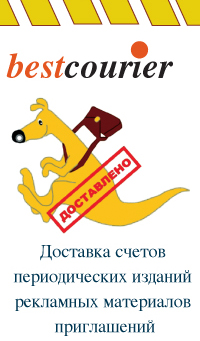
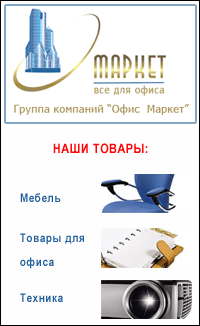
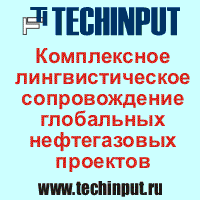
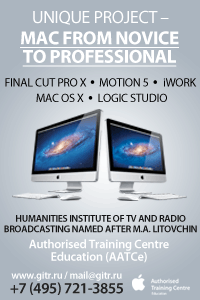
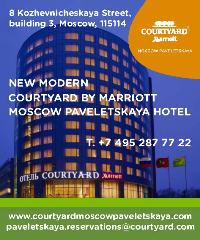
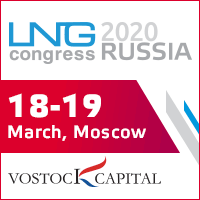


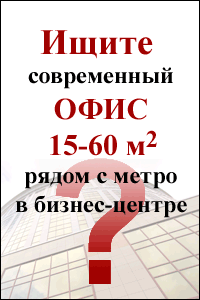
 Web design,
Web design,